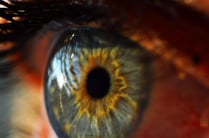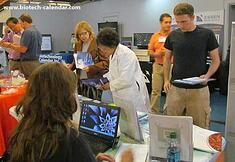 Achromatopsia - a genetic visual disorder that effects about 1 out of every 33,000 Americans - leads to severe vision problems, generally beginning at a young age. People with this disorder are extremely sensitive to light, have trouble seeing during the day (when it is bright out) and cannot see any color.
Achromatopsia - a genetic visual disorder that effects about 1 out of every 33,000 Americans - leads to severe vision problems, generally beginning at a young age. People with this disorder are extremely sensitive to light, have trouble seeing during the day (when it is bright out) and cannot see any color.
Until recently, there have only been 5 genes known to cause this vision disorder, but these genes only account for about half of those with the disorder.
Researchers at Columbia University, in collaboration with an international team, recently identified a sixth gene that can cause Achromatopsia, independently from the other 5. This gene is ATF6, a gene involved in the unfolded protein response.
ATF6 helps regulate the unfolded protein response, which helps regulate the collection of proteins that do not fold properly or fold incorrectly, which can lead to genetic mutations and different disorders.
|
RELATED ARTICLES: |
Through both research of humans and mice with achromatopsia, the research team found that achromatopsia is caused by mutations in the cone cells in the eye. Of the children with achromatopsia tested, some were found to only have mutations in the ATF6 gene, and not the other 5 genes known to cause the disorder.
Dr. Stephen Tsang, lead Columbia University researcher on the study, explained that “ATF6 is found in every cell of the body, but for some reason only the cone cells were affected.” Mutations in this gene did not lead to any other disorders in the children.
Further research on mice led the team to believe that the effected cone cells of those with Achromatopsia are not permanently damaged, and there could be potential ways to correct the disorder by treating the signaling pathway that controls the unfolded protein response.

"Several drugs that activate this pathway have already been approved by the FDA for other conditions and could potentially benefit patients with achromatopsia,” said Tsang.
Along with producing world-renowned life science research, Columbia University is also a leader in terms of the amount of life science funding the institution receives each year from public and private donors. Columbia University ranked 15th in the nation for total R&D expenditures in the 2013 fiscal year, and received over $350 million in life science funding from the NIH in fiscal year 2014.
Departments at Columbia University receiving more than $10 million of this funding include:
- Medicine and Internal Medicine - $83.5 million
- Public Health and Preventative Medicine - $46.4 million
- Neurology - $27.5 million
- Pathology - $27.4 million
- Psychiatry - $18.6 million
- Biology - $14.6 million
- Biochemistry - $13.5 million
- Genetics - $12.3 million
- Pediatrics - $10.4 million

Interested in meeting face-to-face with hundreds of active life science researchers from Columbia University in one place in just a few hours time? Biotechnology Calendar, Inc. produces an annual BioResearch Product Faire™ Event in New York that brings together lab suppliers with more than 325 of these active scientists.
The 6th Semiannual BioResearch Product Faire™ Event at the Armory Track & Field Center in New York, adjacent to Columbia University, will be held on Tuesday, September 29, 2015. At the 2014 event, researchers from 44 different science departments and 20 on-campus buildings attended the event.
Lab suppliers interested in participating in this event are encouraged to visit the link below to learn more:
New York area researchers can visit the link below to learn more about attending this complimentary event:
While in New York, consider making the most of your time to meet with the most researchers by participating in the other 2 shows in the region.
Stony Brook University - 10th Annual BioResearch Product Faire™ Event - Monday, September 28, 2015
Rockefeller University - 19th Semiannual BioResearch Product Faire™ Event - Wednesday, September 30, 2015




